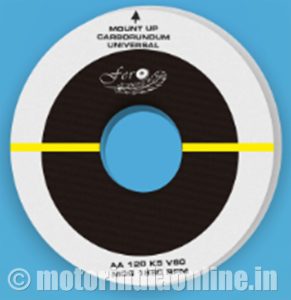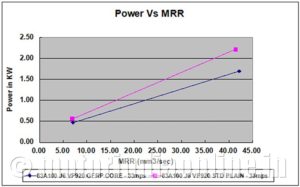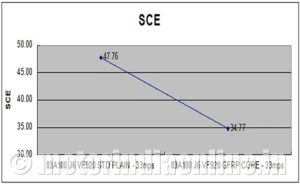Precision grinding is an abrasive machining process that is carried out to achieve these on the parts – Size, form and finish. One of the biggest challenges for advanced grinding technology from hi-tech industries range from the difficult-to-machine materials for turbine blades in aerospace jet-engines to high speed grinding of Inner ring track of a bearing. As the grinding technology advances, the machines and machine tools are keeping pace.
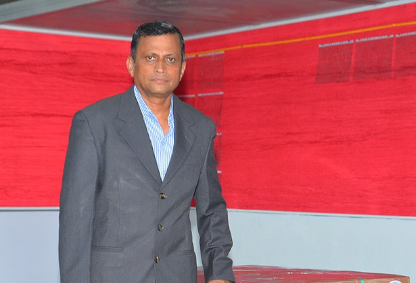
Higher operating surface speeds, faster feed rates, better fluid delivery systems, and cutting-edge dressing mechanisms have been some of the highlights of the new machine tool systems. More specifically, high-speed grinding in conventional grinding systems have been applied to many automotive parts that require to be ground fast and precise.
With the fast-changing machine tool systems, the understanding of grinding has improved over the last few decades. Improved process monitoring techniques have helped understand grinding systems better and qualify a grinding wheel performance better. The real time monitoring of the grinding process and understanding of the microscopic interactions of various elements of a grinding process have helped in developing metrics that help in understanding and thereby improving grinding processes. From merely the number of parts ground, today grinding wheel’s performance is measured in terms of the energy drawn by it to perform the operation. Very fine tolerances on parts are possible, thanks to improved process understanding and the control factors.
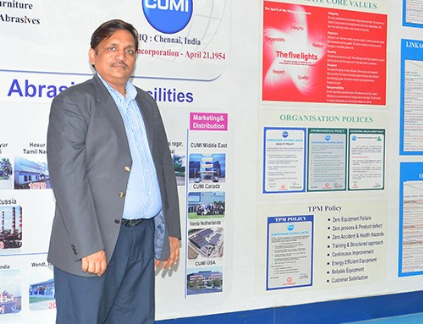
Machine speeds higher than 80 meters per second have always posed a challenge both to the grinding wheel manufacturer and to the user. The centrifugal forces are much higher than the grinding forces and therefore efforts have been made to keep the wheel weight down, which in turn brings down the centrifugal forces down without compromising the ‘Q’ (material removal rate).
The result of a CUMI research on this subject is a two-system grinding wheel (Fero Grinding wheel) with a solid core inside. This fiber-reinforced wheel is a result of detailed study of multiple types of materials that give the optimum results with respect to the Modulus of Rigidity, Modulus of Elasticity and the fatigue strength of material, considering that recycling is a definite option. The specially treated fiber is strongly bonded with thermosetting resins and glued to the parent ceramic-bonded grinding wheel with special adhesives.
The newly-developed FERO two element grinding wheel achieved the following:
- High bursting speeds of 200 mps+ that allows a conventional grinding wheel to be operated comfortably at speeds of 125 mps.
- Reduction of wheel weight to the tune of 20%, depending on the usable diameter of the wheel. This is a significant achievement as this reduces the idle power of the grinding system and also provides for easier mounting of the grinding wheel.
- Lesser vibration in the grinding wheel, as a result of better mass distribution in the grinding wheel. As the unbalanced mass in the wheel is proportional to the second power of the wheel speed, a wheel low unbalance plays a great significance in reduced vibration levels and thereby better part geometry.
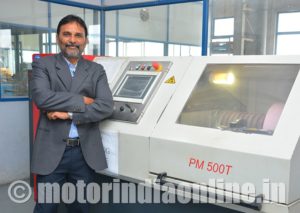
A series of tests run with FERO grinding wheels on the cylindrical grinding machine run at normal wheel speeds with CUMI’s 83A range of conventional abrasives showed interesting results. The process monitoring data showed that the power drawn during the grinding process showed a drop with increasing material removal rates. The gap widened with increasing material removal rates. This results in pushing the grinding wheel for higher feed rates without touching the peak power rate that causes burns and thermal damage on the parts. The specific cutting energy for the same specification of grinding wheel shows a drop with the FERO wheels compared to the wheels without the fiber core.
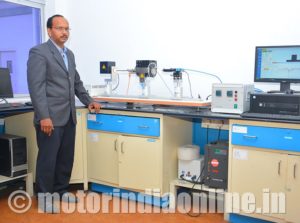
As the result indicates, the FERO wheel developed by CUMI has great scope for the following:
- Higher operating wheel speeds that hitherto was not possible in conventional grinding wheels
- Light weighting of wheels that bring down the overall power drawn by the grinding wheel, with the possibility of improved material removal rates, without causing thermal damage to parts.
- Improved stability of the wheel due to the dampening effect of the center fiber core of wheels
- Lower normal forces compared to the tangential forces, helping in increasing the force ratio and thereby keeping the grinding wheel sharp, resulting in improved parts per dress.
- Effective Recycling of the fiber portion not only helps in keeping the costs down, but can also help in reducing the carbon footprint!
With growing demand for production of automotive and other parts to be more precise and cost effective, CUMI’s FERO wheels in combination with hi-performance Abrasives, could well turn out to be the shot in the arm for the production engineers in the grinding shop!
